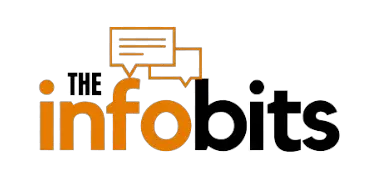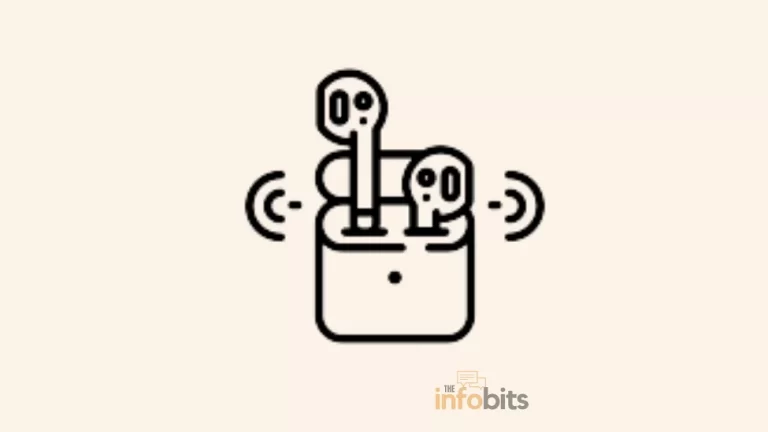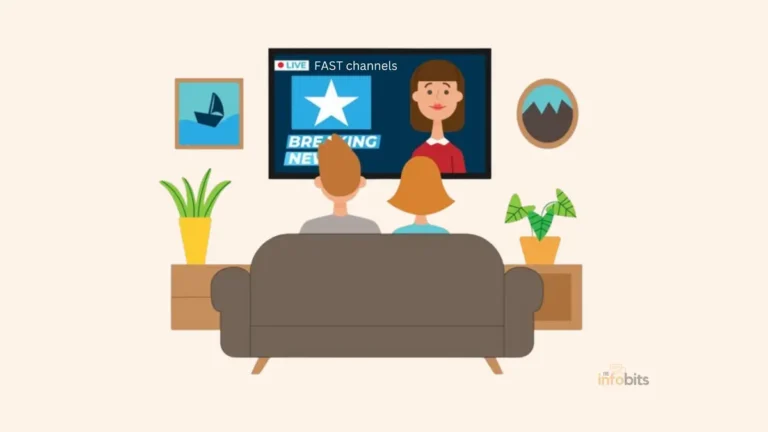AVOD vs FAST: Key Differences and What They Mean for Viewers
In the evolving landscape of digital streaming, two comparisons of acronyms stand out: AVOD vs FAST.
Both models offer unique ways for content creators and advertisers to reach their audiences, yet they operate on fundamentally different principles.
AVOD, or Ad-Supported Video on Demand, and FAST, Free Ad-Supported Streaming TV, cater to the growing demand for cost-effective and accessible media content.
As more consumers pivot away from traditional cable TV, understanding these models becomes important in making informed decisions about content distribution, monetization, and consumption.
Knowing AVOD
AVOD, or Ad-Supported Video on Demand, is a dynamic approach to delivering content where viewers can access videos for free in exchange for watching advertisements.
Unlike subscription-based models, AVOD lowers users’ entry barriers, making it a compelling choice in today’s cost-sensitive market.
This model leverages the inherent willingness of viewers to tolerate ads in return for free content.
What is AVOD
At its core, AVOD is a model where users do not pay for the content they consume. Instead, the platform generates revenue by displaying ads during video playback.
The advertisements are often short and strategically placed to maintain viewer engagement while ensuring advertisers get the exposure they pay for.
The success of AVOD hinges on a fine balance between the frequency and relevance of ads and the quality of the content offered.
Platforms like YouTube and Tubi have popularized the AVOD model, making it a household term.
These platforms use sophisticated algorithms to target ads effectively, ensuring that the advertisements shown are relevant to the viewer’s interests, thereby enhancing user experience while maximizing advertiser returns.
Benefits of AVOD
One of the primary benefits of AVOD is accessibility. Since there is no paywall, a broader audience can access a vast content library, making it an inclusive model.
This wider reach can translate into higher ad revenues, as advertisers are willing to pay more to access a larger, more diverse audience.
Additionally, AVOD platforms can collect data on viewer preferences and behaviors, providing valuable insights to advertisers.
This data can be used to refine and target marketing campaigns more effectively, thereby increasing the efficiency of ad spend.
For content creators, this model can offer an ongoing revenue stream as long as their content remains engaging and popular.
Drawbacks of AVOD
Despite its advantages, AVOD comes with certain drawbacks. The primary concern for users is the interruption caused by ads, which can detract from the viewing experience.
Excessive or poorly placed advertisements, if not managed effectively, can cause audience irritation and disengagement.
For content creators, the revenue generated through AVOD can be inconsistent. It heavily relies on the platform’s ability to attract advertisers and on the content’s ability to draw and retain viewers.
In competitive markets, this can be a significant challenge, and creators may find it difficult to predict their earnings.
Examples in use
Several platforms exemplify the successful implementation of the AVOD model.
YouTube is perhaps the most well-known, offering a vast range of user-generated and professional content, all supported by ad revenue.
Another example is Tubi, which offers a wide selection of movies and TV shows for free, with ads interspersed throughout.
Crackle, owned by Sony Pictures, is another platform that uses AVOD to offer free streaming of movies and TV shows.
The success of these platforms highlights how AVOD can be a lucrative and sustainable model for distributing video content, provided the balance between ads and user experience is maintained.
Understanding FAST
FAST, or Free Ad-Supported Streaming TV, represents a hybrid approach that combines the principles of traditional broadcast TV with the flexibility of streaming.
This model offers scheduled programming for free, much like cable TV, but without subscription fees, making it an attractive option for viewers looking for a cost-effective alternative.
What is FAST
FAST platforms provide a linear streaming service similar to traditional TV channels but without the cost of a cable subscription.
Users may watch scheduled programming, which includes live TV, repeats, and on-demand video combined with advertising.
This model bridges the gap between the predictability of TV schedules and the convenience of streaming.
FAST services often include a wide range of channels, catering to diverse interests. From news and sports to entertainment and lifestyle, there’s something for everyone.
This variety, combined with the zero-cost entry, makes FAST a compelling choice for many viewers.
Advantages of FAST
One of the main advantages of FAST is the familiar viewing experience it offers. Users can tune into their favorite channels and enjoy scheduled programming without worrying about monthly subscription fees.
This model is particularly appealing to cord-cutters who miss the structure of traditional TV but want to avoid its high costs.
For advertisers, FAST opens up opportunities to reach audiences in a context they are comfortable with.
The combination of scheduled programming and targeted ads ensures that advertisements are more likely to be seen and engaged with. Additionally, the data collected from viewer interactions can be used to optimize ad campaigns further.
Drawbacks of FAST
Despite its benefits, FAST also has limitations. The reliance on scheduled programming can be a drawback for viewers who prefer the on-demand flexibility of other streaming models.
The structure of TV schedules may not suit the viewing habits of all audiences, particularly younger viewers who are accustomed to watching what they want when they want.
For content creators, FAST can present challenges in terms of visibility and revenue sharing. With numerous channels and content options available, it can be difficult for individual shows or movies to stand out.
Furthermore, the revenue generated from ads is shared across the platform, which may lead to lower earnings for creators compared to other models.
Examples in use
Pluto TV, owned by ViacomCBS, is a leading example of a successful FAST platform. It offers hundreds of channels, including news, sports, and entertainment, all supported by advertisements.
Users can watch live TV or choose from a library of on-demand content, providing a blend of traditional and modern viewing experiences.
Another notable example is Xumo, which provides free access to live and on-demand content across a variety of genres.
The platform’s user-friendly interface and extensive channel lineup make it a popular choice for viewers looking for a free alternative to traditional cable TV.
AVOD vs FAST: Factors for comparison
When evaluating AVOD and FAST, several key factors come into play. These include monetization strategies, user experience, and content availability.
Understanding these differences can help stakeholders make informed decisions about which model best suits their needs and goals.
Monetization Strategies: AVOD vs FAST
Monetization strategies differ significantly between AVOD and FAST.
AVOD relies on a pay-per-view model where advertisers pay based on the number of views or clicks their ads receive.
This approach can be highly profitable if the content attracts a large audience and the ads are relevant and engaging.
In contrast, FAST platforms generate revenue through a combination of scheduled advertisements and sponsorship deals.
Advertisers pay for fixed slots during scheduled programming, similar to traditional TV. This model provides a more predictable revenue stream but may offer less flexibility in terms of ad targeting and performance tracking.
User Experience: AVOD vs FAST
User experience is another crucial factor in the AVOD vs FAST debate. AVOD offers the advantage of on-demand content, allowing users to watch videos at their convenience.
However, the interruption caused by ads can detract from the viewing experience, especially if the ads are not well-targeted.
FAST, on the other hand, provides a more traditional viewing experience with scheduled programming.
This can be a positive for users who enjoy the structure of TV schedules but may be a drawback for those who prefer the flexibility of on-demand content.
The quality and placement of ads also play a significant role in determining user satisfaction.
Content Availability: AVOD vs FAST
Content availability is another area where AVOD and FAST differ. AVOD platforms typically offer a vast library of on-demand content, ranging from user-generated videos to professionally produced shows and movies.
This diversity can attract a wide audience, but may also lead to a cluttered viewing experience.
FAST platforms, in contrast, offer a curated selection of channels and programs. The focus is on providing a balanced mix of live TV, reruns, and on-demand content, catering to a variety of tastes and preferences.
This curated approach can make it easier for users to find and enjoy content, but may also limit the overall breadth of available options.
Market Trends in AVOD and FAST
The market for AVOD and FAST is continually evolving, driven by changing consumer preferences and advancements in technology.
Understanding these trends can provide valuable insights for stakeholders looking to navigate this dynamic landscape.
Audience Adoption
Audience adoption rates for AVOD and FAST have been steadily increasing. As more viewers seek cost-effective alternatives to traditional cable TV, both models have found a growing user base.
Younger audiences, in particular, are more inclined towards AVOD due to its on-demand nature and the vast array of content available.
FAST, on the other hand, has seen adoption among older demographics who appreciate the familiar structure of scheduled programming.
The ease of access and the variety of channels offered make it an attractive option for those looking to replace or supplement their cable TV subscriptions.
Revenue Generation
Revenue generation in the AVOD and FAST markets has been robust. AVOD platforms benefit from the ability to target ads more precisely, leading to higher engagement and click-through rates.
This targeted approach can result in better ROI for advertisers, making AVOD an appealing option for brands looking to maximize their ad spend.
FAST platforms generate revenue through a combination of ad slots and sponsorships. The scheduled nature of programming allows advertisers to plan their campaigns more effectively, leading to stable and predictable revenue streams.
This reliability can be particularly appealing in volatile markets.
Emerging Opportunities and Challenges
Emerging opportunities in the AVOD and FAST markets include advancements in AI and machine learning, which can enhance ad targeting and content recommendations.
These technologies have the potential to significantly improve user experience and ad performance, driving further growth in both models.
However, challenges remain. For AVOD, managing the balance between ads and user experience is crucial. Overloading viewers with advertising can cause annoyance and dissatisfaction.
For FAST, maintaining a diverse and engaging content lineup is essential to keep users invested. Both models also face competition from subscription-based services, which continue to dominate the market.
Choosing between AVOD and FAST
Deciding between AVOD and FAST depends on various factors, including the needs of advertisers, content creators, and users.
Each model offers distinct advantages and challenges that must be carefully considered to make an informed choice.
Perks for Advertisers
For advertisers, AVOD provides the perk of precision targeting. By analyzing viewer data, advertisers can deliver highly relevant ads that are more likely to resonate with the audience.
This targeted approach can lead to higher engagement rates and better overall campaign performance, making it a valuable option for brands looking to optimize their advertising efforts.
FAST offers the advantage of a familiar, TV-like experience. Advertisers can leverage the established viewing habits of users to place ads in predictable slots, ensuring consistent exposure.
This approach can be particularly effective for reaching older demographics who prefer scheduled programming over on-demand content.
Implication for Content Creators
Content creators can benefit from AVOD through its expansive reach and ongoing revenue potential. By offering content for free, creators can attract a large audience, which in turn can lead to higher ad revenues.
The key is to produce engaging, high-quality content that keeps viewers coming back.
In the FAST model, content creators must navigate the challenges of visibility and revenue sharing.
The curated nature of FAST platforms means that creators need to produce standout content to capture viewers’ attention. While the revenue may be more stable, it is often shared across the platform, which can impact individual earnings.
User Preferences
User preferences play a crucial role in the success of both AVOD and FAST.
AVOD appeals to users who prioritize flexibility and a vast content library. The ability to watch what they want, when they want, without paying a subscription fee, makes AVOD a popular choice among younger viewers and those who prefer an on-demand experience.
FAST, meanwhile, caters to users who appreciate the structure of scheduled programming. The familiarity of a TV-like experience, combined with the zero-cost entry, makes FAST an attractive option for older demographics and those seeking a straightforward alternative to cable TV.
Understanding these preferences is key to effectively targeting and retaining users in both models.
Conclusion
In conclusion, both AVOD and FAST offer unique advantages and challenges in the rapidly evolving digital streaming landscape.
AVOD’s on-demand flexibility and targeted advertising make it a powerful tool for reaching diverse audiences, while FAST’s familiar, scheduled programming appeals to those seeking a cost-free alternative to traditional TV.
Stakeholders must carefully consider their specific needs and goals when choosing between these models, keeping in mind the differing monetization strategies, user experiences, and content availabilities.
As market trends continue to shift, staying informed and adaptable will be essential for success in the competitive world of digital streaming.
Please share this article with your friends and relatives if you find it useful.
We also ask that you bookmark this page for future reference, as we are constantly updating our articles with new information.
Sign up for our free newsletter to receive fresh information immediately in your inbox and keep technically up to date.







